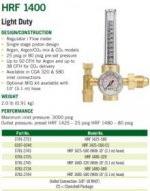Looking to get new flow meters for the Mig and Tig welders.
Victor lists two models with identical (seemingly) specifications other than one has "Teflon seats" and one has "PTFE seats". (0781-2723 vs 0387-0240).
Some places like Grainger show a $40.00 price difference, some list both for the same price. Just wondering if anyone knows the pros and cons of each.
Will the neighbors, the wife, or the dog even be able to tell the difference? (The Dog is pretty sharp, the others, well, not so much)
Thanks.
Dave
Victor lists two models with identical (seemingly) specifications other than one has "Teflon seats" and one has "PTFE seats". (0781-2723 vs 0387-0240).
Some places like Grainger show a $40.00 price difference, some list both for the same price. Just wondering if anyone knows the pros and cons of each.
Will the neighbors, the wife, or the dog even be able to tell the difference? (The Dog is pretty sharp, the others, well, not so much)

Thanks.
Dave


